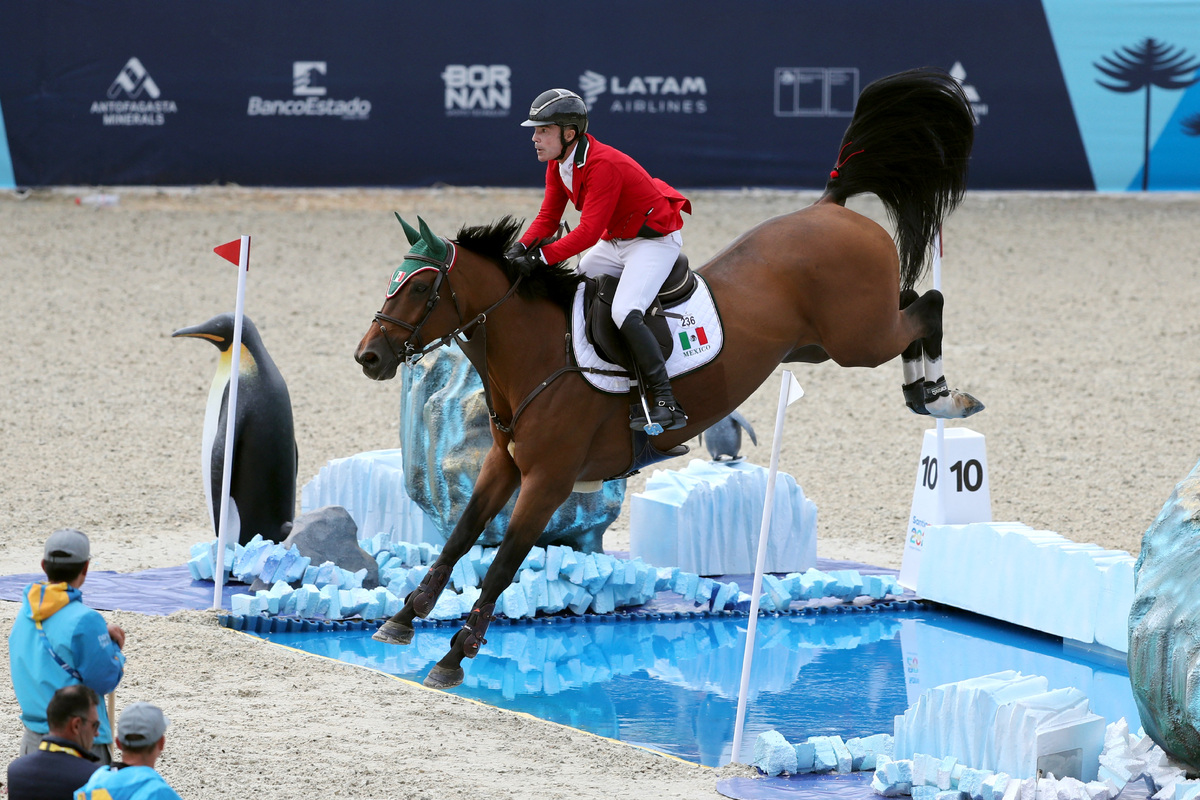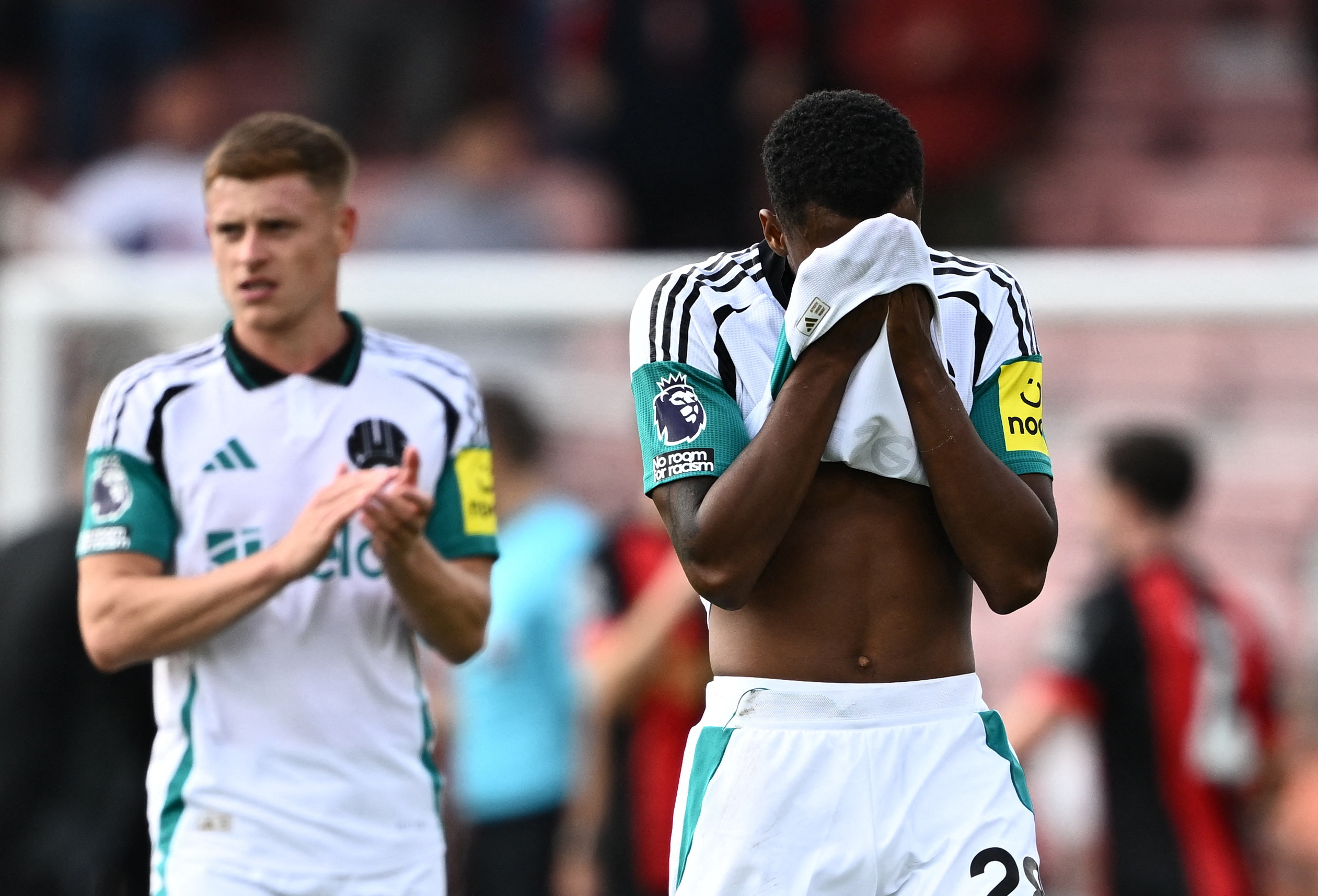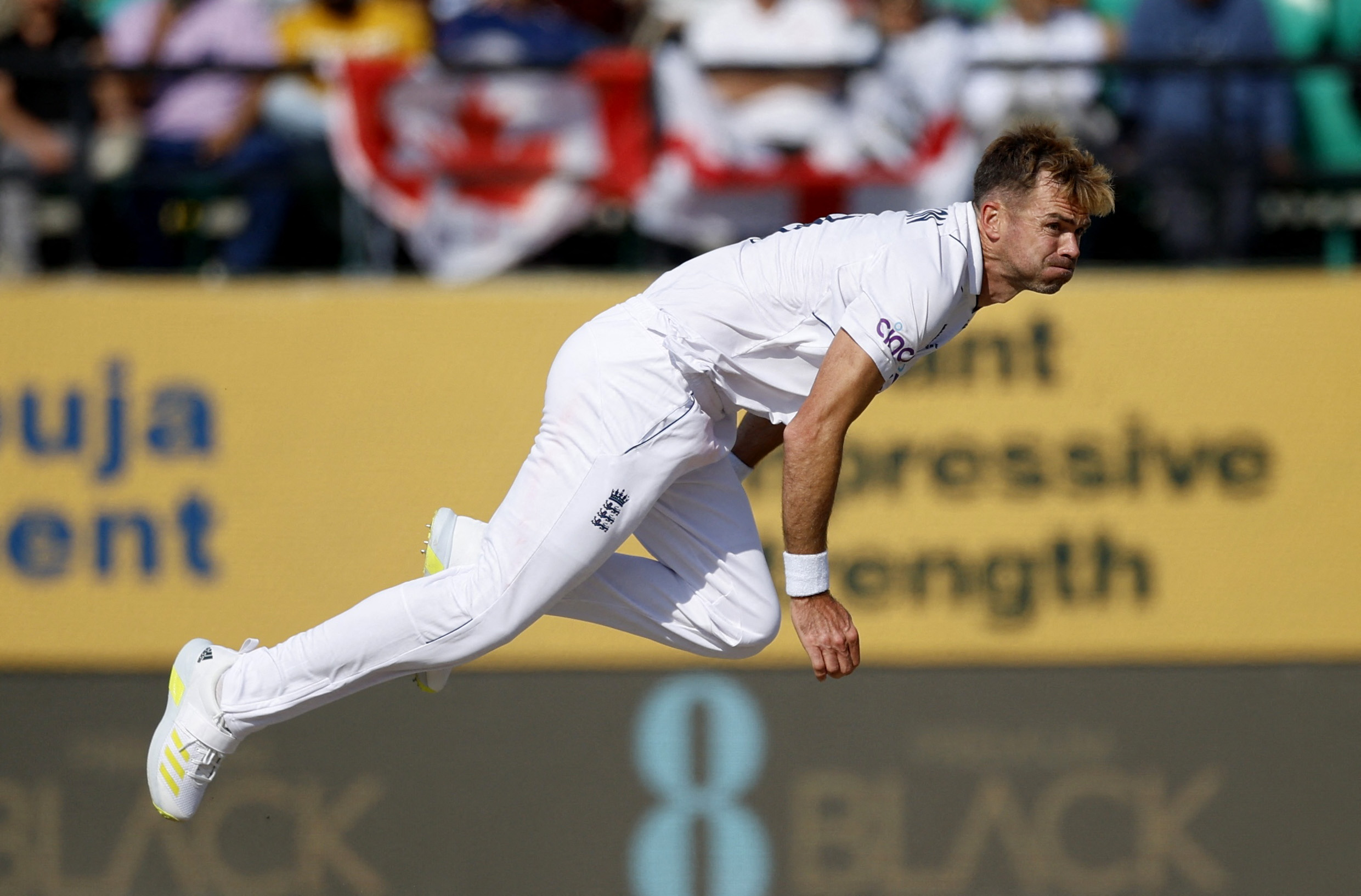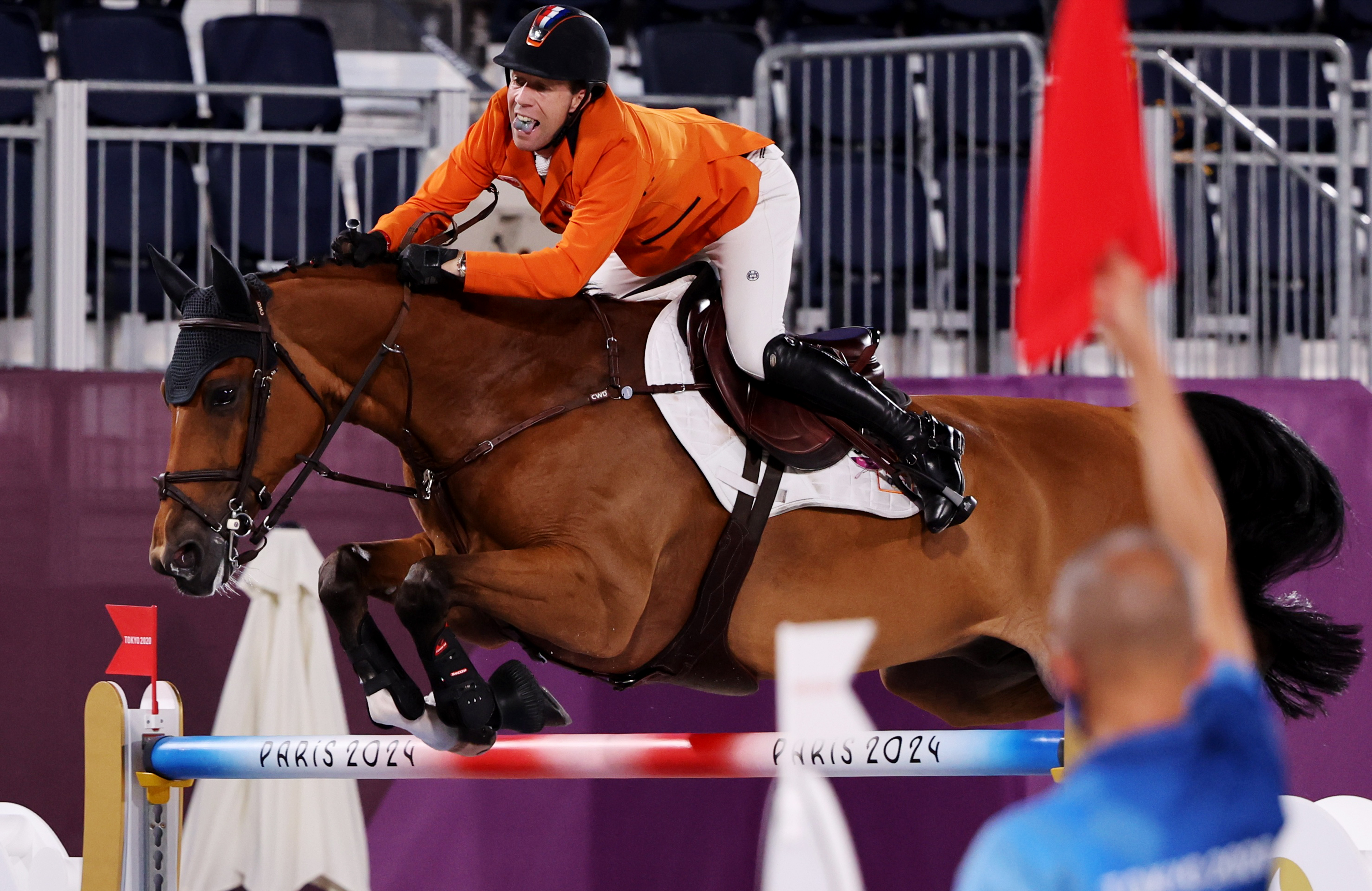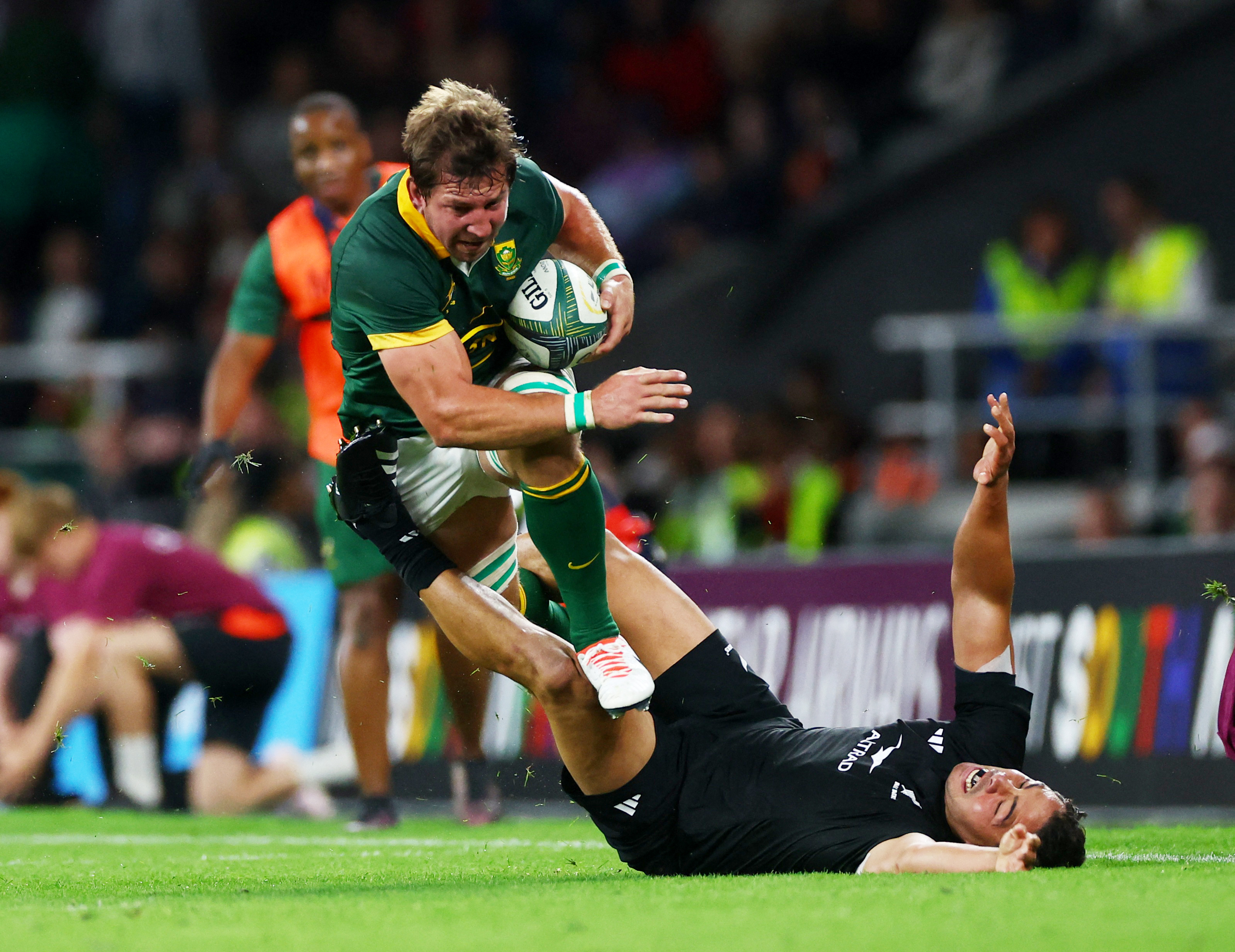You are viewing 1 of your 1 free articles
No Trojan Horse: Strength Reduces Injury
Strength underpins performance across multiple sporting codes. Equestrian is no different. Christie Wolhuter explains the essential components of building a training program for the equestrian athlete.
Mexico’s Jose Antonio Chedraui Eguia in action riding H-Lucky Retto. Credit: REUTERS
The demands of sport continue to rise, and with that, the need for athletes to improve their physical conditioning(1). This can be challenging for equestrians as there is little research on the horse-rider interaction and how physical conditioning regimes impact performance(2). Show jumping equestrian requires a unique blend of strength-endurance, aerobic fitness, and motor control(3,4). Furthermore, show jumpers report high incidences of chronic pain and acute and overuse injuries(5).
Before clinicians can design appropriate preventative or rehabilitative programs, they must understand the demands of sport. Disciplines requiring faster gaits, such as the canter or gallop, and those requiring jumping efforts need the rider to adopt a ‘forward’ position. The positional demands require strength in the legs, lower back, and arms(4). Due to the increased isometric demand from the rider’s legs and trunk muscles during a show jumping course, the cardiovascular system works harder to supply oxygen to the working muscles(3).
WHY
Resistance training aims to improve strength and cardiorespiratory fitness(6). Researchers at Southampton Solent University found that resistance training to failure may improve aerobic fitness(6). Show jumping has multiple phases, and the most physically demanding is landing(2). Novice riders show the greatest ‘technique breakdown’ on the landing as it is the point where they struggle to absorb the forces on their ankles, knees, hips, and spine(2). Practitioners can observe the technique breakdown as athletes demonstrate abrupt trunk and head movements as the horse lands(2). Furthermore, any loss of balance or control during approach, take-off, and landing may make the rider less able to judge and predict upcoming fences(2). Therefore, back extensor and posterior chain strength are vital to help riders deal with the forces imposed on them.
Table 1: Benefits of resistance training
| Benefit | |
| The slowing of age-related sarcopenia. | Muscle mass declines between 3-8% each decade after age 30(7). This averages about 0.2 kg of lean weight loss annually(8,9). Skeletal muscle density influences various metabolic risk factors, including obesity, dyslipidemia, type 2 diabetes, and cardiovascular disease(10). |
| Bone mineral density preservation. | Exercise programs prevent or reverse around 1% of bone loss per year of the femoral neck and lumbar spine in adult and older adult women(11). |
| Mental health. | Resistance training includes the reduction of symptoms in people with fatigue, anxiety, and depression(12). Furthermore, it may also help alleviate pain in individuals with osteoarthritis, lower back pain, and other conditions(12). |
| Injury prevention. | Effective in the prevention of overuse injuries(13). |
WHAT
There is no blueprint for success when building a cross-training program, but exercise is useful in supplementing their regular riding program. Assessing the athlete’s starting point through testing and a thorough history is also essential. Moreover, practitioners must discuss pain and injury concerns.
Table 2: Strength exercise suggestions to meet the demands of show jumping.
| Focus area | Exercise |
| Back strength/resilience. | 45-degree back extension, deadlift, barbell bent over row, barbell good mornings, and seated barbell good mornings. |
| Single-leg stability/strength. | Single-leg Romanian deadlift (weight in one hand), Bulgarian split squats (weight in one hand). |
| Knee resilience. | Single-leg knee extension. |
| Ankle strength and stability. | Seated and standing calf raises. |
| Global strength. | Back and front squat. |
| Posterior chain. | Hip thrust, stiff-legged deadlift, single-leg hip lift. |
| Plyometric/shock absorption. | Depth jumps, drop jumps, power jumps. |
As with any sport, riders prefer to spend time on the horse rather than in the gym. Professional riders ride multiple horses daily, and recreational riders will most likely have to balance work, life, and families, so most of them will be strapped for time. Therefore, practitioners must design programs that provide an effective dose within the time constraints. Training once to twice per week over 12 weeks is enough to maintain physiological strength capacity in well-trained athletes(14). Moreover, athletes can increase lumbar extension strength while training from one to three days per week, and training once a week versus twice a week shows similar improvements in strength when training to failure(15,16). Therefore, clinicians should encourage athletes with limited time to train one to three times per week as it benefits their riding and quality of life.
Cardiovascular
Show jumping is a moderate to higher-intensity sport(3). Specificity is a critical component of creating meaningful change in strength programs. Practitioners define it as training-induced adaptations that occur only in those muscle fibers recruited during a particular exercise(17). However, for specific individuals, short, intense training may be a time-effective and strong stimulus for inducing the benefits usually associated with more prolonged, submaximal endurance-type workouts(18). For example, four to six 30-second maximal sprints on a stationary bike done twice a week show similar benefits to longer cardiovascular (CVS) training done multiple times per week(19).
Horse schooling sessions typically last around 30 – 45 minutes and must happen multiple times weekly to ensure the horse is prepared for competition. Rider heart rates can range from 57 – 85 % of heart rate max during a schooling session(3). Jumping a full course of multiple fences places a short duration and high demand on the cardiorespiratory system, and interval-based training in a rider’s program will benefit their competition preparedness(3). Practitioners must assess the athlete’s cardiovascular fitness to determine if investing time in CVS training is necessary. If the athlete has sufficient cardiovascular capacity, they may benefit more from resistance training(13).
Individuals adapt differently to cardiovascular exercise due to genetic differences(20). There is no one-size-fits-all, and practitioners must consider individual training modality preferences and time constraints when designing programs.
Proprioceptive Training
Humans have three systems that keep them upright against the forces of gravity: the visual, vestibular, and proprioceptive systems(21). Proprioception has three functions: controlling force by grading muscle contractions, coordinating limb movement, and maintaining an upright posture(22). Improving proprioception is critical for horse riding because of the complicated nature of moving harmoniously with the perturbations of the horse’s gaits. Novice riders attempt to stabilize their center of gravity (COG) by bracing, which can restrict the horse(23). Bracing to improve balance is also more likely to unseat the rider over fences. Advanced riders have less total head acceleration over a fence as they have better head stability due to better motor control, which would aid in stabilizing the vestibular system(24).
Researchers from the Netherlands demonstrated that balancing on an unstable surface does not challenge the ankle proprioceptors, but rather, the central nervous system seems to emphasize other sources of information about the spatial orientation of the body(25). This is not to say balancing on an unstable surface is incorrect, but rather, it may not be biasing the mechanoreceptors in the ankle ligaments and muscles(25).
Improving proprioception can happen in the saddle with correct and intentional training. However, practitioners must incorporate it into a holistic conditioning program (see table 3). They must ensure riders have sufficient balance and control during the ‘easier’ gaits before progressing to the more challenging ones.
Table 3: Proprioceptive exercise suggestions for show jumpers.
| Balancing on a stable surface | Biasing the visual system | Biasing the proprioceptive system | Biasing the vestibular system |
| Single-leg balance (eyes open, head in neutral). | x | ||
| Single-leg balance (eyes closed). | x | x | |
| Single-leg balance (head extended, eyes open). | x | x | |
| Single-leg balance (head extended, eyes closed). | x | x | x |
| Single-leg balance (head in neutral, head looking from left to right). | x | x |
Conclusion
Improving overall physical capacity is helpful for anyone, let alone athletes. Practitioners play a vital role in ensuring that athletes can internalize the benefits of resistance training on their performance and quality of life. They should strongly encourage show jumping enthusiasts to engage in resistance training, especially if they are not riding multiple horses per day, multiple days per week. Furthermore, although resistance training is most important due to its many benefits and proprioception and aerobic exercise can add an arrow to their quiver.
References
- Sports Med 18, 330-339 (1194).
- Annu Int Conf IEEE Eng Med Biol Soc. 2010;2010:684-7
- Eur J Appl Physiol 82, 499–503 (2000).
- Comparative Exercise Physiology 6: 129-135.
- Am J Sports Med 2009 Nov;37(11):2205-13
- Journal of Exercise Physiology. 2012 Jun;15(3).
- J. Aging Res. 2011; 2011: 127315.
- Hum. Biol. 1976; 48: 161–73
- J. Appl. Physiol. 2000; 88: 1321–6.
- J. Obes. 2011; 2011: 482564.
- Osteoporos. Int. 1999; 9: 1–12.
- Am. J. Lifestyle Med. 2010; 4: 377–396.
- BJSM 2018;52:1557-1563.
- Int J Sports Med. 1988 Oct;9(5):316–9.
- Spine (Phila Pa 1976). 1990 Jun;15(6):504–9.
- Br J Sports Med. 2007 Jan;41(1):19–22.
- Clin Exp Pharmacol Physiol. 2002 Mar;29(3):218-22).
- J Physiol. 2008 Jan 1;586(1):151-60)
- BMC Endocr Disord. 2009 Jan 28;9(1):3.
- Med Sci Sports Exerc. 2005 Jun;37(6):964–972.
- AJSM Vol 34, Issue 3, pp. 490 - 498
- Encyclopedia of Clinical Neuropsychology. Springer, New York, NY.
- August 2020 PLoS ONE 15(8):e0237727.
- IEEE Engineering in Medicine and Biology Society. Conference. 2010. 684-7.
- Eur J Appl Physiol (2012) 112:1577–1585.
Newsletter Sign Up
Subscriber Testimonials
Dr. Alexandra Fandetti-Robin, Back & Body Chiropractic
Elspeth Cowell MSCh DpodM SRCh HCPC reg
William Hunter, Nuffield Health
Newsletter Sign Up
Coaches Testimonials
Dr. Alexandra Fandetti-Robin, Back & Body Chiropractic
Elspeth Cowell MSCh DpodM SRCh HCPC reg
William Hunter, Nuffield Health
Be at the leading edge of sports injury management
Our international team of qualified experts (see above) spend hours poring over scores of technical journals and medical papers that even the most interested professionals don't have time to read.
For 17 years, we've helped hard-working physiotherapists and sports professionals like you, overwhelmed by the vast amount of new research, bring science to their treatment. Sports Injury Bulletin is the ideal resource for practitioners too busy to cull through all the monthly journals to find meaningful and applicable studies.
*includes 3 coaching manuals
Get Inspired
All the latest techniques and approaches
Sports Injury Bulletin brings together a worldwide panel of experts – including physiotherapists, doctors, researchers and sports scientists. Together we deliver everything you need to help your clients avoid – or recover as quickly as possible from – injuries.
We strip away the scientific jargon and deliver you easy-to-follow training exercises, nutrition tips, psychological strategies and recovery programmes and exercises in plain English.
